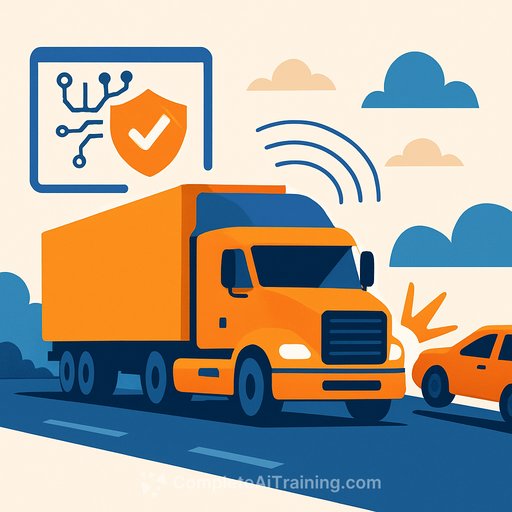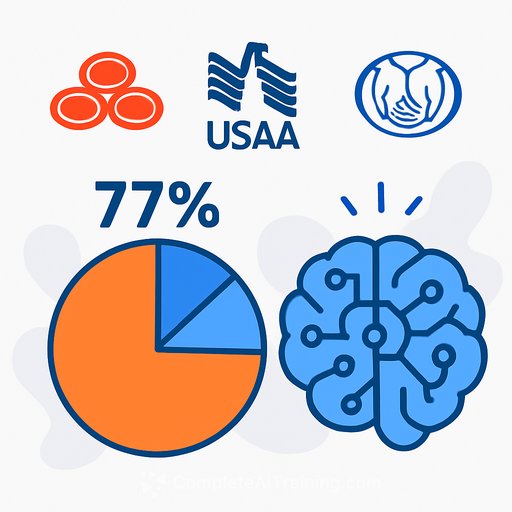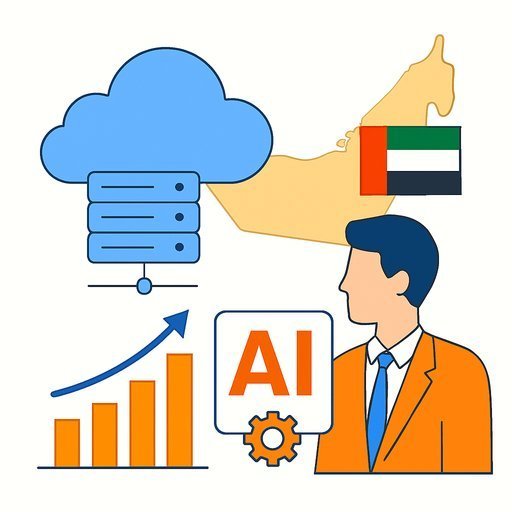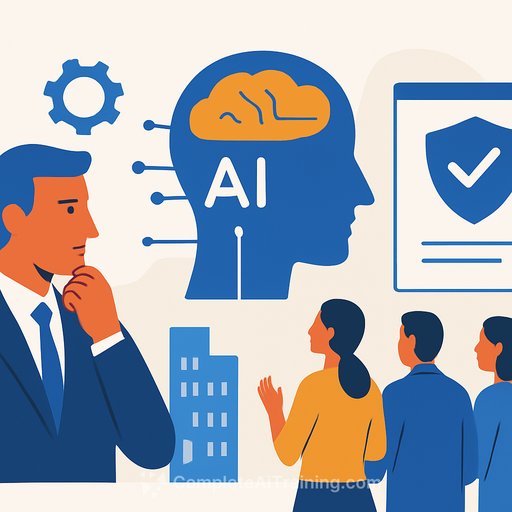AI Fleet Safety Technology: Transforming the Trucking Industry
AI fleet safety technology is cutting preventable accidents by up to 92%, thanks to innovations like data-driven dashcams, weather intelligence, and AI-powered driver coaching. These advances are helping fleets reduce breakdowns, avoid CSA violations, and secure insurance discounts ranging from 5% to 15%. Factory-installed advanced driver-assistance systems (ADAS) and autonomous yard trucks are also ushering in a new phase of smarter, safer trucking operations.
In the second quarter of 2025, trucking fleets saw a surge in AI-powered telematics and safety tools that prevent accidents and boost efficiency. This article provides an impartial overview of the latest technology: from AI dash cams and smart trailer sensors to predictive maintenance platforms. Insurance professionals will find these developments particularly relevant, as they directly affect risk management and underwriting.
AI-Powered Telematics: Enhancing Safety and Efficiency
Data-driven safety solutions are now accessible to fleets of all sizes. At Samsara’s “Beyond 2025” conference, several new AI-driven safety features were revealed, combining machine vision, real-time data, and big data analytics. These systems help drivers and fleet managers anticipate hazards and improve operational workflows.
A standout example is Samsara’s AI Dash Cam Multicam system, which supports up to four HD cameras per truck, delivering a 360-degree vehicle view. The AI monitors these feeds and alerts drivers instantly to dangers like pedestrians or cyclists in blind spots, giving them an “extra set of eyes.” Alerts such as forward collision warnings and blind-spot notifications help reduce reaction times and minimize accident risks.
Another key innovation is Samsara’s Weather Intelligence, which integrates National Weather Service data into fleet dashboards. Drivers and dispatchers receive real-time alerts about severe weather along their routes, enabling proactive rerouting to avoid storms, wildfires, or floods.
Advanced Dashcams and AI Alerts: Real-Time Driver Support
Modern AI dashcams do more than record—they actively analyze driving behavior and road conditions to warn drivers of hazards. Providers like Motive and Netradyne offer systems that detect unsafe actions such as harsh braking, tailgating, and lane departures, immediately alerting drivers to correct their behavior.
Over half of the fleets using Samsara’s dashcams have successfully used video evidence to protect drivers from liability, saving an average of $5,000 to $25,000 per incident. This capability helps mitigate the risk of costly lawsuits, commonly known as “nuclear verdicts,” which have significantly increased insurance costs in trucking.
AI Driver Coaching and Gamification: Building a Safer Driving Culture
Technology alone isn’t enough to improve safety; driver engagement is critical. AI-driven coaching platforms analyze hundreds of driving events, rank them by risk, and deliver targeted feedback. Samsara’s “Safety Coaching for Lean Teams” automates this process, sending short training videos and gentle reminders to drivers’ smartphones.
To keep drivers engaged, some apps use gamification techniques, including TikTok-style videos and end-of-day scorecards. These bite-sized, entertaining lessons cover topics like distracted driving and mirror use, making safety training more effective.
Predictive Analytics for Maintenance and Cargo Safety
AI extends beyond driver behavior to equipment and cargo monitoring. Predictive maintenance platforms analyze sensor data and maintenance histories to identify mechanical issues before they cause breakdowns. Smart trailers equipped with telematics monitor brake wear, tire pressure, and ABS faults, alerting fleet managers to potential problems.
Response from Fleet Operators and Insurers
Fleet operators adopt AI safety tools not just to protect drivers but also to reduce costs and improve reliability. Safer operations mean fewer accidents, less downtime, and better service for customers.
Insurance companies recognize these benefits and often offer premium discounts between 5% and 15% to fleets that implement AI-driven dashcams and monitoring systems. Some insurers also provide free hardware in exchange for access to safety data, helping to align incentives.
OEM Integration and Autonomous Yard Trucks
Many truck manufacturers now include advanced safety and connectivity features as standard or factory options. In 2025, several OEMs and startups demonstrated autonomous and remotely operated yard trucks in controlled environments, signaling progress toward broader autonomous trucking applications.
Privacy, Trust, and the Future of Smart Trucking
While AI safety technology offers clear benefits, driver privacy and trust remain vital. Transparency about how data and footage are used—focused on coaching and protection rather than surveillance—is essential to maintain driver confidence.
The trucking industry is moving steadily toward a “zero-accident” future by integrating IoT, AI, and data analytics across operations. This shift is creating safer roads and more efficient fleets, with significant implications for insurers managing risk.
Key Developments in AI-Driven Fleet Safety (2025)
- Multicam 360° AI dash cams provide real-time blind-spot and tailgating alerts, reducing driver risk and litigation exposure.
- Weather Intelligence overlays National Weather Service data on in-cab devices for proactive rerouting around severe weather.
- Automated AI driver coaching ranks risk events, delivers targeted micro-training to smartphones, and gamifies safety performance.
- Predictive maintenance platforms analyze ECU fault codes and sensor data to prevent brake, tire, and ABS failures before they cause breakdowns.
- Smart-trailer telematics monitor cargo conditions to prevent securement violations and spoilage.
- Insurers incentivize adoption by offering premium discounts and free hardware in exchange for safety data sharing.
- OEMs introduce factory-installed ADAS, integrated cloud dashboards, and pilot autonomous yard tractors to enhance safety.
For insurance professionals, understanding these technologies is crucial for accurate risk assessment and developing competitive offerings. Learn more about AI applications and their impact on industries at Complete AI Training.
Your membership also unlocks:






